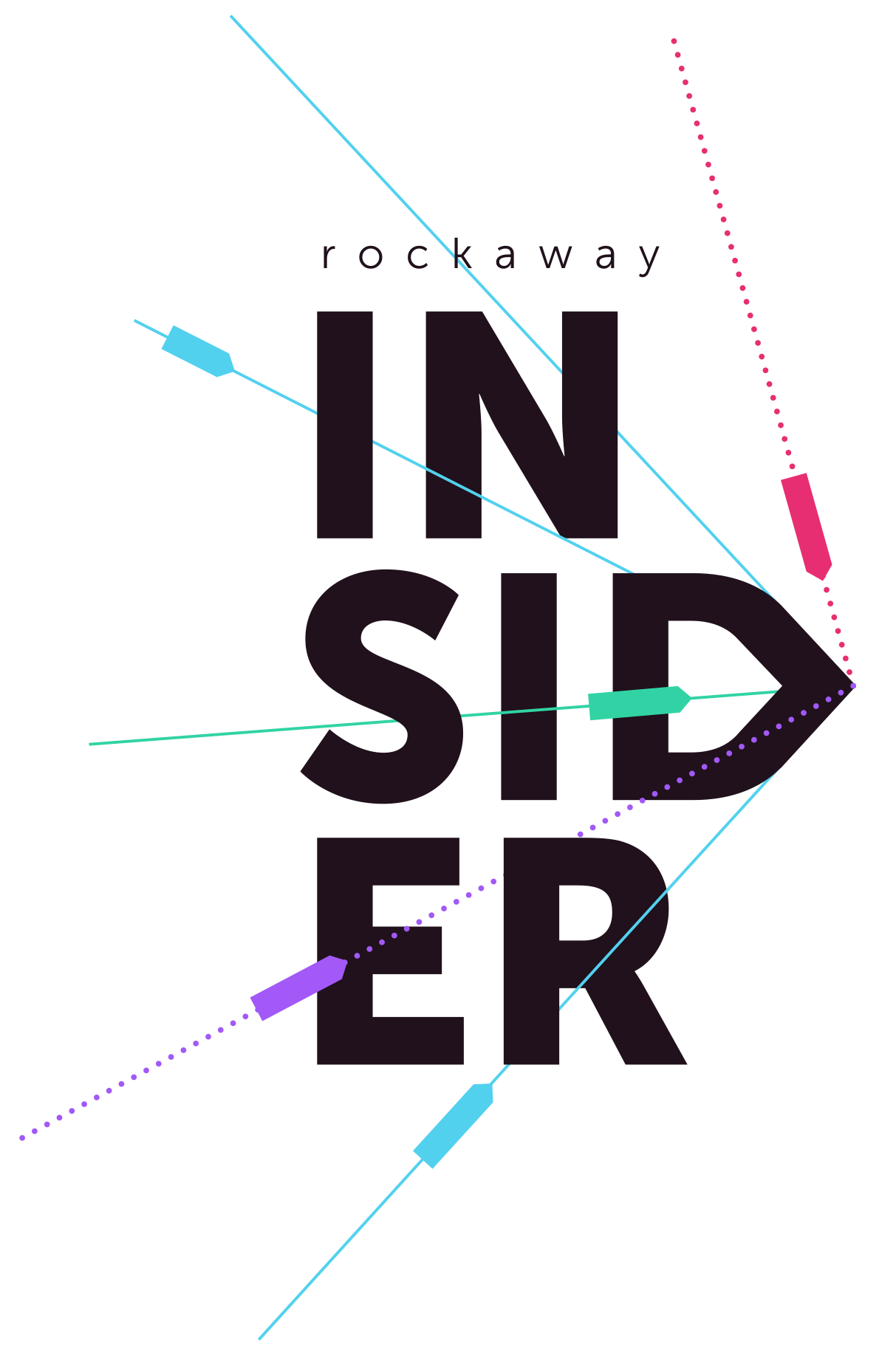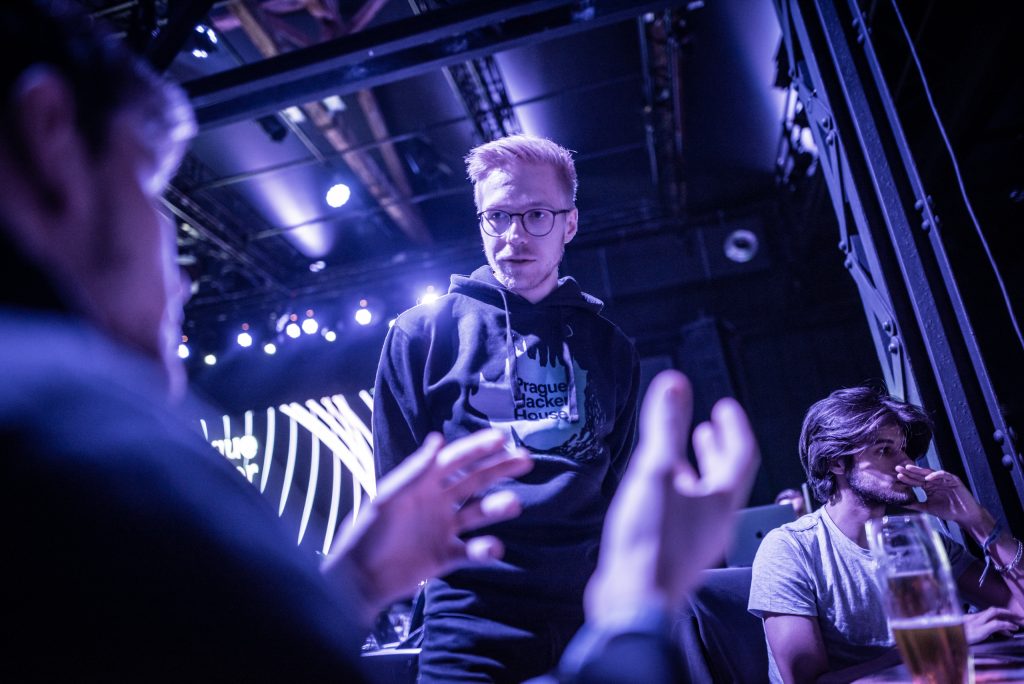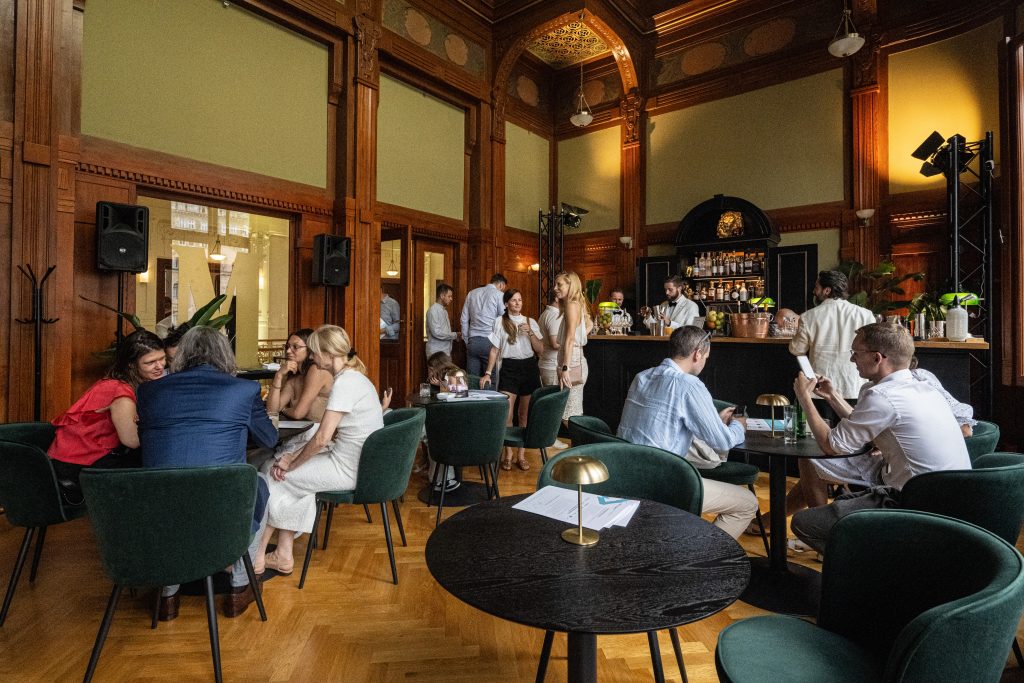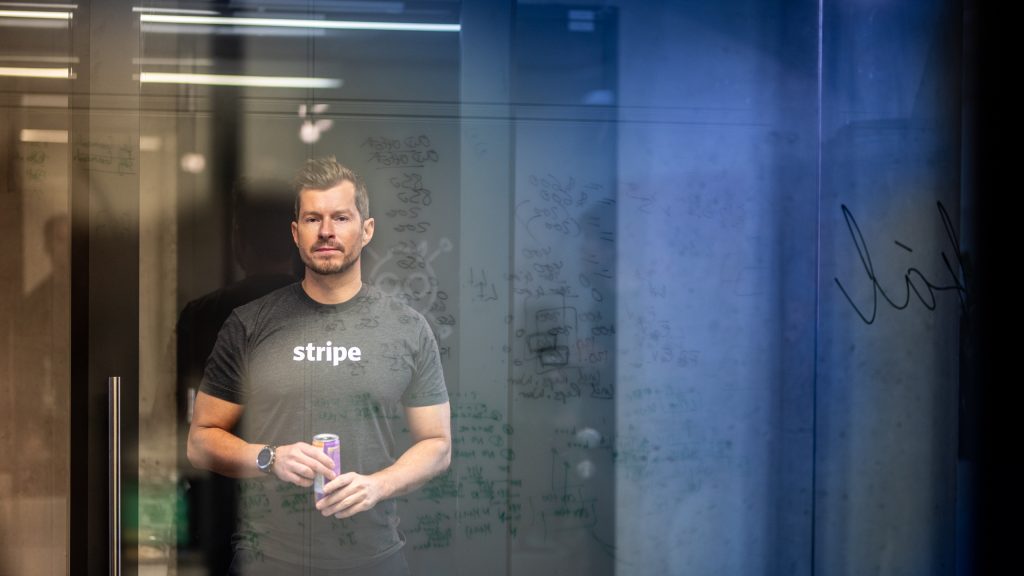All newsRadek Horák and Adam Bilko: “In 10 years, blockchain will be commonplace”
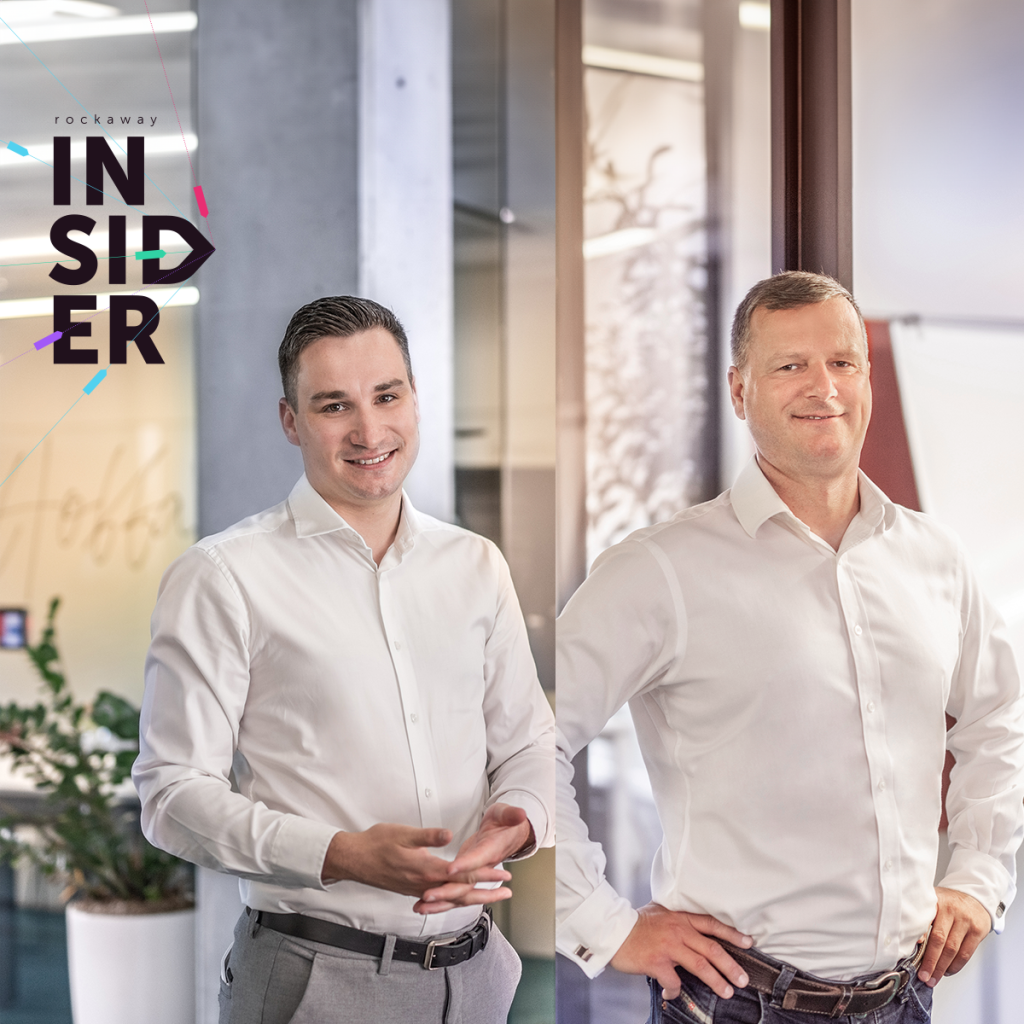
One is the CFO of RockawayX VC Fund, the other an asset manager at RockawayX Credit Fund. And both admit that they find their work truly fulfilling – they believe that in just a few years blockchain will break its – after all, still persistent – reputation as a mysterious technology for insiders, and many services on it will be used by the public and lay people quite naturally.
Their ordinary day? Basically nonexistent. The world of blockchain is so diverse and varied that there is no time for routine. Read Radek Horák and Adam Bilko’s take on the world of digital assets in the new issue of Insider:
What does your average workday entail as the CFO of the RockawayX VC Fund/ manager of the RockawayX Credit Fund?
RADEK HORÁK (ROCKAWAYX VC FUND CFO): RockawayX is a very dynamic environment. I don’t know what an average workday entails, but my mornings are usually the same. I read our internal Slack, where we share new information, to find out what happened since the previous evening, on Telegram and on X I read news from the blockchain world and portfolio companies and check my email. On Monday afternoon the investment committees of the Credit and Venture funds meet, where we decide what to invest in or what to sell. The rest of my workday usually varies a lot. I usually spend a large part of the day in on-line or in-person meetings across various time zones, be they with our fund administrators, auditors, or with AMISTA, with which we’re launching a new fund. Over the past couple of weeks, I’ve spent a lot of time on a transaction in which we sold part of our locked SOL tokens worth on the order of tens of millions USD from the first venture fund. An essential part of my workday is, of course, regular communication with my team, and I’d like to take this opportunity for their professional attitude and hard work.
ADAM BILKO (ROCKAWAYX CREDIT FUND ASSET MANAGER): Each day is completely different, and it depends on what deal is currently on the table. Aside from the credit fund, we also do other things. For example, right now we’re purchasing a protocol, which we’re restructuring, so I’ve been spending more time on that. In the team we’re discussing various products that we could launch on this protocol.
Our credit fund is basically an alternative to banks. We provide credit to companies active on blockchain. If it’s a centralized entity – a completely classical company – it needs to go through due diligence, and based on the results we can then lend it funds. I have to get to know their teams well, because they’re usually very young companies, and so often we think up “custom” terms for the entire deal that make sense. It’s very creative work – nothing is carved in stone, it’s a bit different every time. In the case of decentralized entities, there is a similar process, but everything is on blockchain, and thus there are certain rules. A smart contract needs to be analyzed so nobody can hack it, for example – that’s what our IT guys are for. I negotiate with the CEOs of these entities: terms and conditions, lock-up duration, equity kickers in the form of tokens… So, every day is different for me, but also has stable elements: I check the portfolio, continuously monitor risks, make sure money isn’t being lost from the smart contract, monitor off-chain risk. For classical, centralized companies, I communicate both with their CEOs and their entire teams. I need to be in the picture, to know what’s happening on the market, and monitor risks in the portfolio.
What do you think the world of digital assets and blockchain will look like in 10 years, and what do you like the most about it?
RADEK: We differentiate between blockchain technology and digital assets that live on the blockchain. I think that in 10 years blockchain will be a regular part of our lives. People will use blockchain both for work and in their private lives and won’t even notice it. They’ll be using financial services on the blockchain 24/7, social networks where active users will be rewarded for their activity, and instead of across-the-board marketing, companies will be able to communicate with and reward customers directly. And it’ll be normal, for example, that a “skin” in a game will belong directly to the player, who will be able to lend or sell it to other players. As far as digital assets go, most of the world’s population will own investment tokens such as SOL or tokenized Apple shares, their avatar, and digital dollars, euros, or perhaps even crowns, which they’ll use to pay on the internet and in stores. Galleries will have sections for digital art (NFTs) and in homes digital art will be projected beside physical pictures. I enjoy being part of the next phase of the digital revolution, which will change the world in a similar way as the internet did. I remember the world before the internet and realize how much it has changed. Blockchain has at least the same potential.
ADAM: To tell you the truth, I have no idea (laughs). The market is so dynamic that a year ago there’s no way I’d have been able to guess what would be happening today. I’m a bit hopeful that it will all move toward the mass market, hence among all people, who will see their advantages. Today, if you have a bank account, a regulator can come along at any time and block it. That can’t happen on blockchain. This has both pros and cons – if you lose the keys to your account, you’ll never be able to access your money again.
I’d like it if the overall user experience improved so that even people like my parents would start using the system. That’s because I really think it makes sense, for example for international payments. Recently I received a work-related payment from Liechtenstein – and they charged me a thousand CZK. That’s brutal. But on-chain, I can send any amount to anyone in the world for two cents, the payment doesn’t go through five correspondence banks where I don’t know where the money will get held up. Peer-to-peer payments are decentralized, nobody controls them. And for me, that’s the biggest use case.
Our currency is relatively stable, but companies from Latin America or developing countries that our fund works with often prefer the dollar to their own currency. But instead of dollars they buy USD Coin, because they get a better exchange rate and have their money right away. Countries with a high rate of inflation are the biggest example of all this.
What blockchain trends and technologies have excited you the most recently, and why?
RADEK: I’m thrilled that as a technology, blockchain is nearing the point where mass use will be possible. Over 500 million users already have experience with using blockchain, and this number is growing constantly. In 2021, when the number of blockchain users and transactions grew rapidly, due to limited capacity, especially of the Ethereum network, transactions were becoming unreasonably expensive (for example, up to hundreds of USD to send USD 10 to Ethereum). Now alternative blockchain networks are coming to the fore, for example Solana and L2 networks on Ethereum, and even for a large number of transactions you won’t pay more than a few cents per transaction. Another trend that that’s excited me is the rapid development of ZK technology, which preserves user privacy when performing user types of transactions using cryptography, which in theory has been around for dozens of years already, but hitherto has not been technologically implementable. And I’m also excited about the utilization of blockchain to build DePIN networks. One example is the Hivemapper application, which uses blockchain to incentivize people to help collect data (mapping). Through this approach, Hivemapper has managed to map 8 % of the Earth’s surface over the course of eight months, something that took Google several years. The same decentralized approach is being used to create telecommunications networks for IoT and 5G or the Helium project.
ADAM: Know what? I don’t even know. I don’t follow them that closely, metaphorically speaking, I’m selling picks and shovels during a gold rush, so I’m not really up on the latest trends. But I’m interested in the topic of privacy. Some people who aren’t from this field are saying that blockchain can be used to launder money. That’s complete nonsense, because the advantage of blockchain and simultaneously its disadvantage is that it’s extremely transparent. I know exactly where money is coming from and where it’s going, its final destination, what wallets have interacted with each other – in short, everything. In this respect, blockchain is reminiscent of Big Brother. Currently new protocols are being created that will allow greater privacy. It’s hard to say if money can be made on it, but privacy protocols will have a very important function in terms of real success.
What philosophy do you prefer when investing in blockchain projects, and what is your key principle?
RADEK: Investing in blockchain projects is like any other type of investing. The key thing is always a team that has vision and can deliver. Blockchain is evolving quickly, and it is important for the founding team to be capable of reacting proactively and adapting to new technologies and markets. Another thing that’s important to me is for the given project to consider potential customers. When investing in technologies, it’s easy to fall in love with a new technology, but for all projects we invest in I try to imagine there being enough customers who will use the given technology and will also be willing to pay for its use.
ADAM: Because I work in the credit fund, risk management is the most important thing for me. If one loan makes up 5 percent of the portfolio and it’s not paid off, it might take me an entire quarter to make that 5 percent back again. I could thus lose three, four months of fund performance, which would have far-reaching results. If I wrote off two investments a year, I’d make almost nothing, the fund wouldn’t work. The VC fund works a little differently, it invests in a hundred different projects, of which two work out – and they pay for the entire fund. VC funds operate with the expectation that they’ll write off 90 % of their portfolio. I can’t write off even one loan. So the main philosophy is to invest to make as much as possible while not losing any money.
How do the RockawayX Credit Fund and other RockawayX divisions (VC Fund, Infrastructure, Labs) cooperate on a daily basis?
RADEK: The Credit Fund is a key part of RockawayX. Adam is very entrepreneurially-oriented and is constantly coming up with new ideas and projects. A beautiful example of cooperation between the divisions is the Wormhole project. Wormhole is an “active bridge” that can be used to transfer digital assets between various blockchains (for example, Solana and Ethereum). RockawayX is helping Wormhole develop and operate a solution that makes it possible to accelerate this transfer. Three divisions of RockawayX are working together on this project: Staking operates thirty blockchain networks between which digital assets can be transferred, Labs, in cooperation with the Credit Fund, created and programmed a solution that allows for quicker transfer of these digital assets – and the Credit Fund provides on-chain liquidity. The ideal situation would be if on top of that the VC Fund invested in Wormhole, similarly as is the case with other projects where the VC Fund is the investor and the Credit Fund provides liquidity, such as Kamino, for example.
ADAM: A lot, we especially have a lot of synergy with the VC Fund. The VC Fund invests into protocols, which simultaneously need liquidity to operate properly. That’s when I enter the game. But at the same time each of us has different investors and I myself have slightly different investment criteria from theirs.
That’s not the case just with the VC Fund, but with other divisions, too. A good example is the Wormhole protocol. They already have a product that works, but they want a new, better design. We worked on something similar in the past with their competitor. We offered them a combination of Credit Fund (liquidity supplier), Labs (co-designer), and Staking (validator). We basically offered them the whole package, closed the deal, and hopefully everyone will be satisfied in the end. Cooperation across divisions is important. It’s also a certain competitive advantage of ours, because as far as capital goes, it’s hard to compete with American funds that have billions of dollars at their disposal.
What moment in your career do you consider key, and why?
RADEK: I consider a key moment to be the 15 minutes I had to decide whether I want to move to London and work for Macquarie Asset Management, a division that manages the largest funds in the world focusing on infrastructure. Back then I was working for České radiokomunikace, which Macquarie owned. I was in London on a business trip, working on an important transaction with an unnamed investment company from the Czech Republic. The European head of Macquarie at the time told me that the other party insisted that only Macquarie employees could attend the meeting, which was starting in 30 minutes, and if I wanted to participate, I had to agree to a transfer to London. I called my wife to ask her what she thought, also because your youngest daughter was a year old, and within 10 minutes I answered that I agree. I then worked for Macquarie for over four years, which changed not only my outlook on business, but also on the world. I realized that big business has no geographic boundaries, the people who do it are the same as we are, and that the key to success is to not be afraid, to be open, take a responsible approach to ourselves and to others, and to have integrity. I had the same vision when I joined RockawayX, back then Rockaway Blockchain, and have never regretted it.
ADAM: Joining RockawayX? (smiles) I think that there’s never just one moment, it’s more like a series of moments. Some are successful, others aren’t. Usually, it’s all a combination of good education, luck, and having good people around you.
I was always more interested in equity investing than in credit, and I came to this field from a family office. A lot of my friends couldn’t believe their ears back then, because blockchain was still a bit of a dirty word. And when you said “crypto”, people imagined completely crazy stuff. On the other hand, the Credit Fund is actually a traditional fund, just not in a traditional sector. The due diligence process for centralized entities is almost the same as when you’re buying bonds. It’s important to hire a good team. RockawayX has a good brand by now, so skilled people are applying.
What project of yours are you the most proud of?
RADEK: What my colleagues and I have built in RockawayX over the past four years. RockawayX has become one of the largest investment and tech companies in the area of blockchain in Europe with AUM (Assets Under Management) in funds exceeding USD 600 million and with over USD 1.4 billion in assets staked on our infrastructure. We’re building a global company and I’m convinced that we’ve only just begun.
ADAM: Launching the entire credit fund, which was quite hard. It’s the only regulated fund under AIFMD (Alternative Investment Fund Managers Directive) in Europe that can do DeFi. The fact that we put it all together from a regulatory perspective is quite the success, and starting the whole project up was also demanding. We launched the whole thing during the worst possible time, and despite that in 2022 we didn’t lose money for investors and had positive yield. I just returned from the DAS conference in London, where one of them came up to me and said: “You were the only fund that didn’t lose money for me in 2022.” That made me happy. Last year we were still in a real bear market, and even so, we made investors around 14 percent. This year and next year, it will be even better, I think. So yes, the credit fund on which I’ve been working for over two years now, that’s the main thing for me now.
___
![]()
Did you like this interview?
Get the Rockaway Insider in your inbox every three weeks.
By clicking on “Subscribe” you agree to subscribe to the Rockaway Insider newsletter using the specified e-mail address. You can cancel your subscription at any time directly in the newsletter.
___

